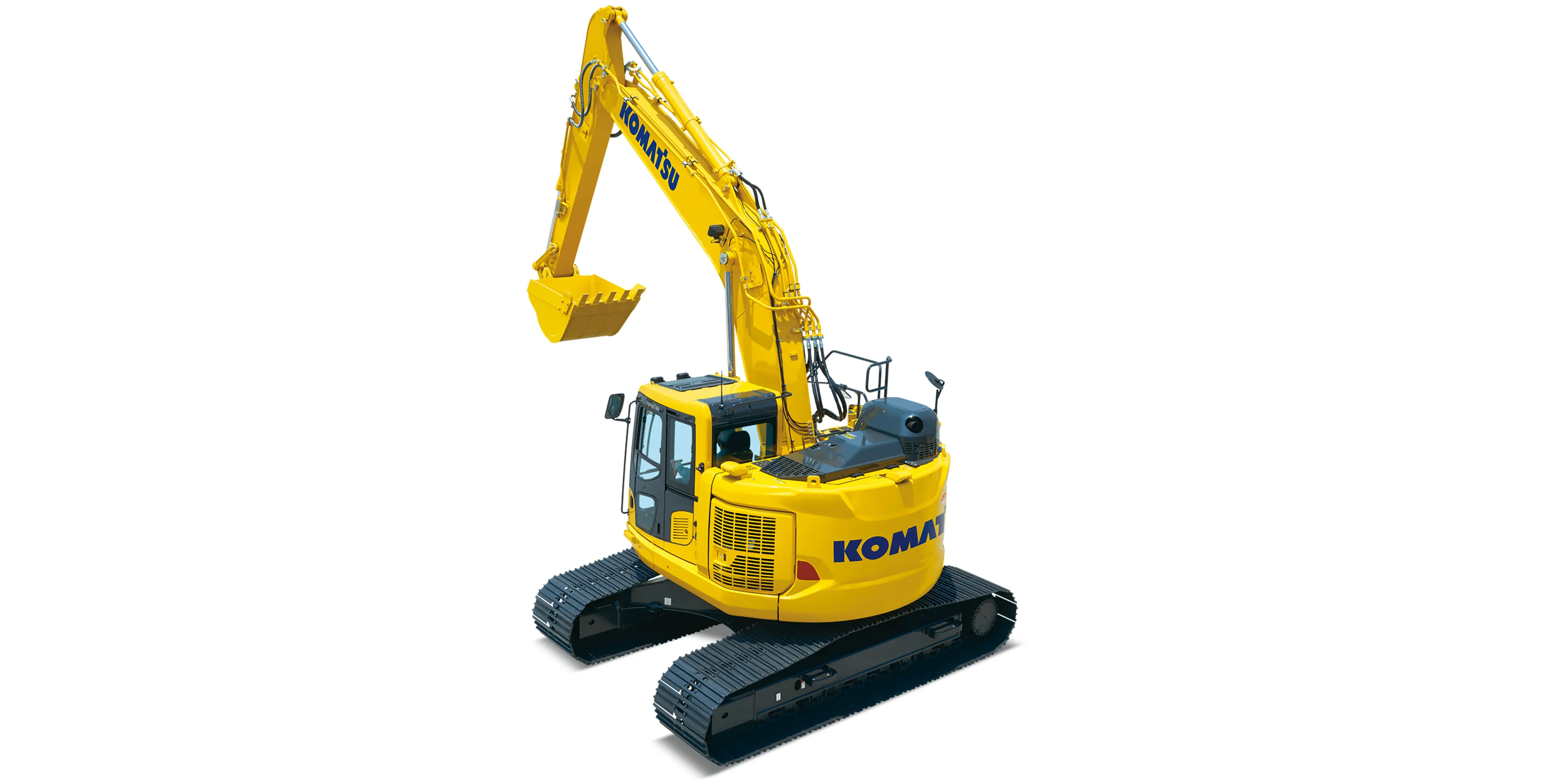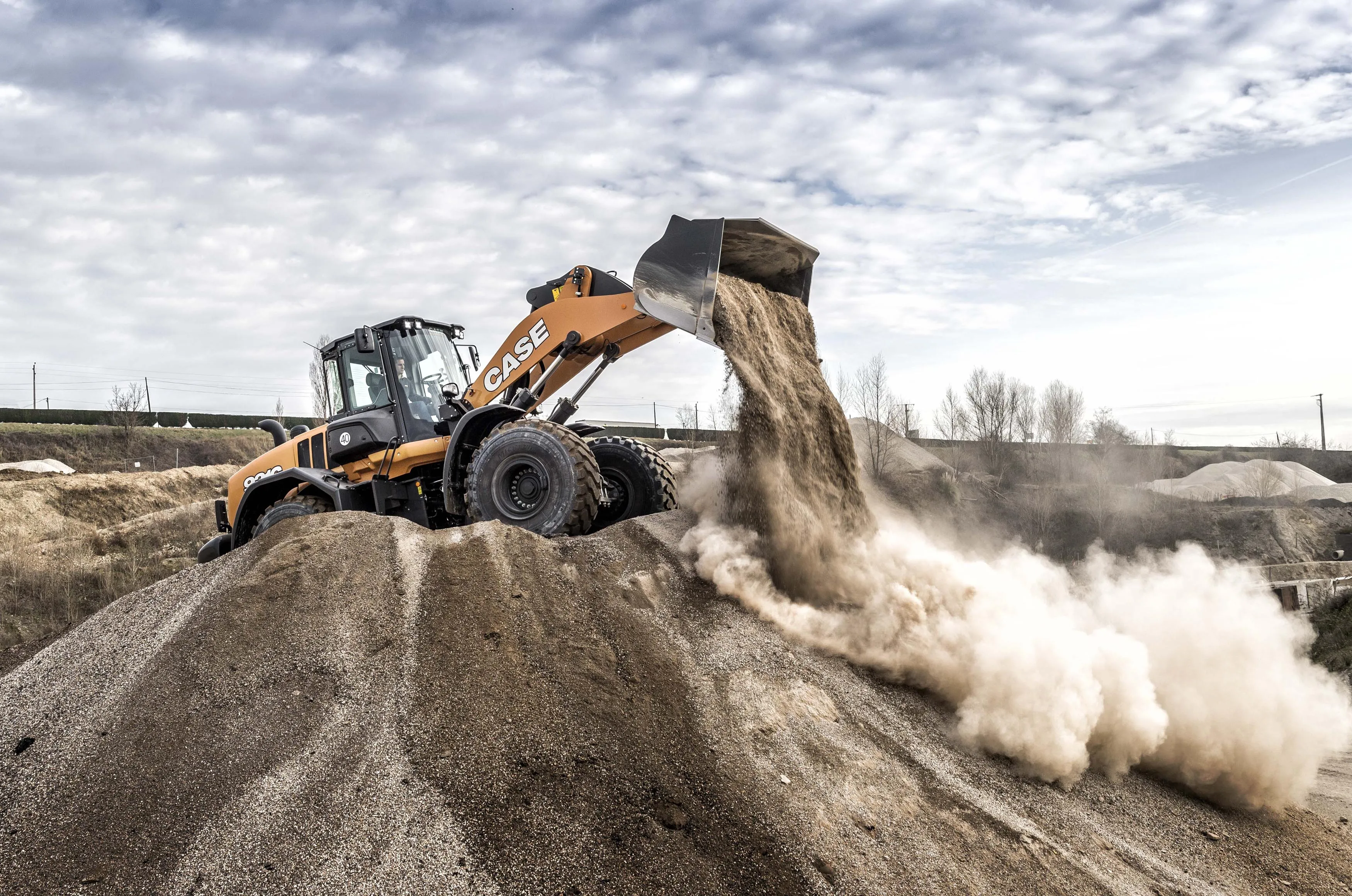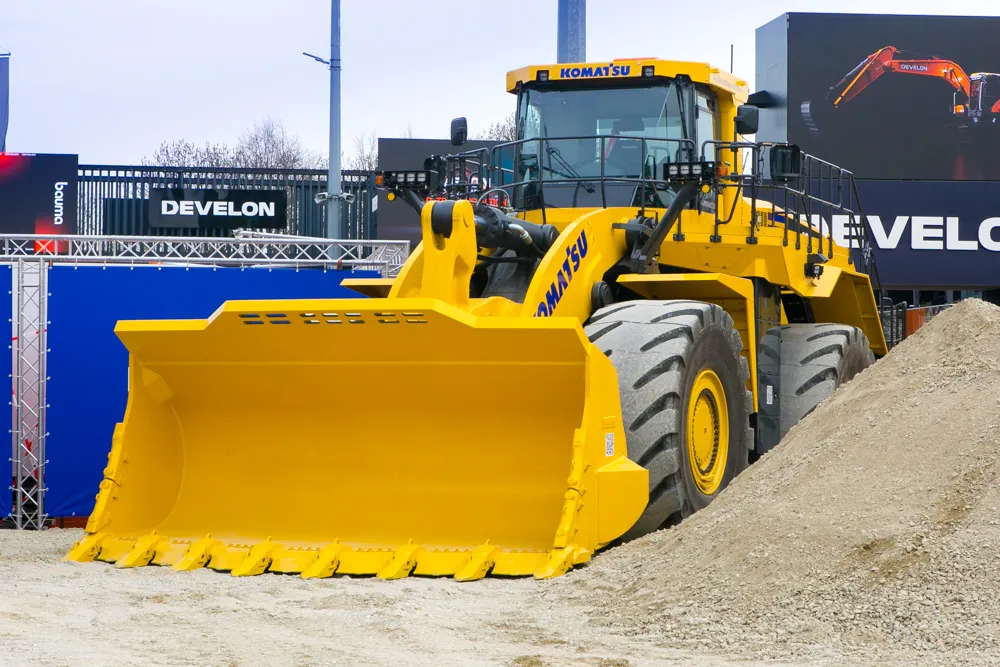“Thanks to Komatsu’s transmission technology and upgraded torque converter, the WA480-8 can offer reduced operating costs,” says Henrik Flohr, senior product manager at Komatsu Europe. “A lower engine speed matching, improved tractive power and acceleration, and higher uphill speeds combine to offer a boost to productivity and lower fuel usage.”
The loader’s Komatsu SAA6D125E‐7 engine, which has an output of 220 kW/299 HP, has an electronic control system to manage the airflow rate and fuel injection, combustion parameters and after-treatment functions. This helps optimise performance and reduce emissions, says Komatsu. The WA480-8 also has an auto-idle shutdown system that prevents unnecessary fuel consumption by automatically shutting down after a pre-determined period of idling. Meanwhile an ECO Guidance system provides the operator with information to help save on fuel.
Updates inside the cab include a new air suspension seat designed to dampen vibrations and give a more comfortable ride for the operator. The Komatsu cab ensures an internal noise level of 71dB(A) and benefits from increased internal air pressure to prevent dust and other particulates entering the cab.
Higher productivity for less fuel from Komatsu’s WA480-8 wheeled loader
Komatsu promises greater productivity for its WA480-8 wheeled loader, with up to 15% lower fuel consumption. “Thanks to Komatsu’s transmission technology and upgraded torque converter, the WA480-8 can offer reduced operating costs,” says Henrik Flohr, senior product manager at Komatsu Europe. “A lower engine speed matching, improved tractive power and acceleration, and higher uphill speeds combine to offer a boost to productivity and lower fuel usage.” The loader’s Komatsu SAA6D125E‐7 engine, which has an
April 24, 2018
Read time: 2 mins
For more information on companies in this article
Komatsu









